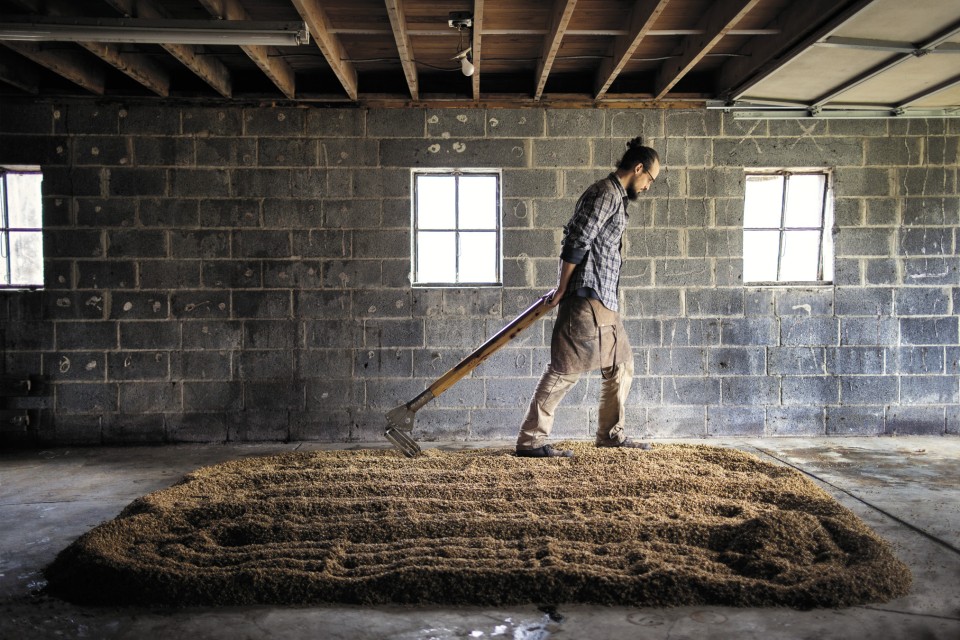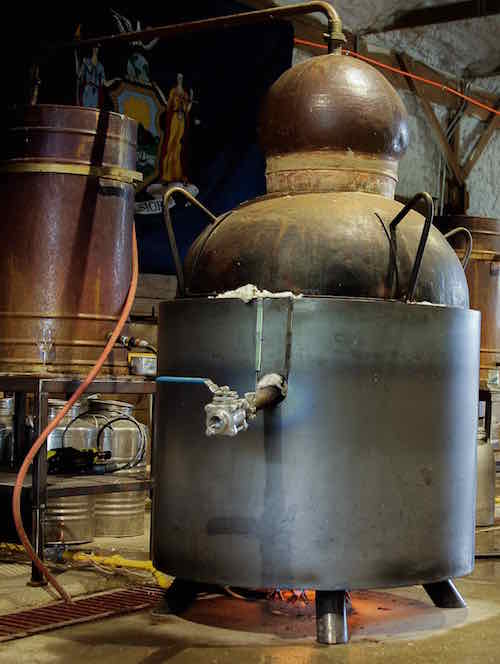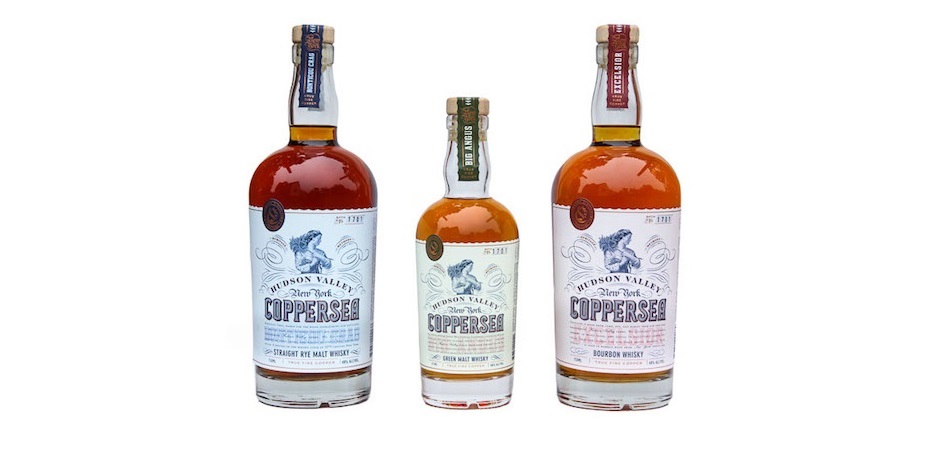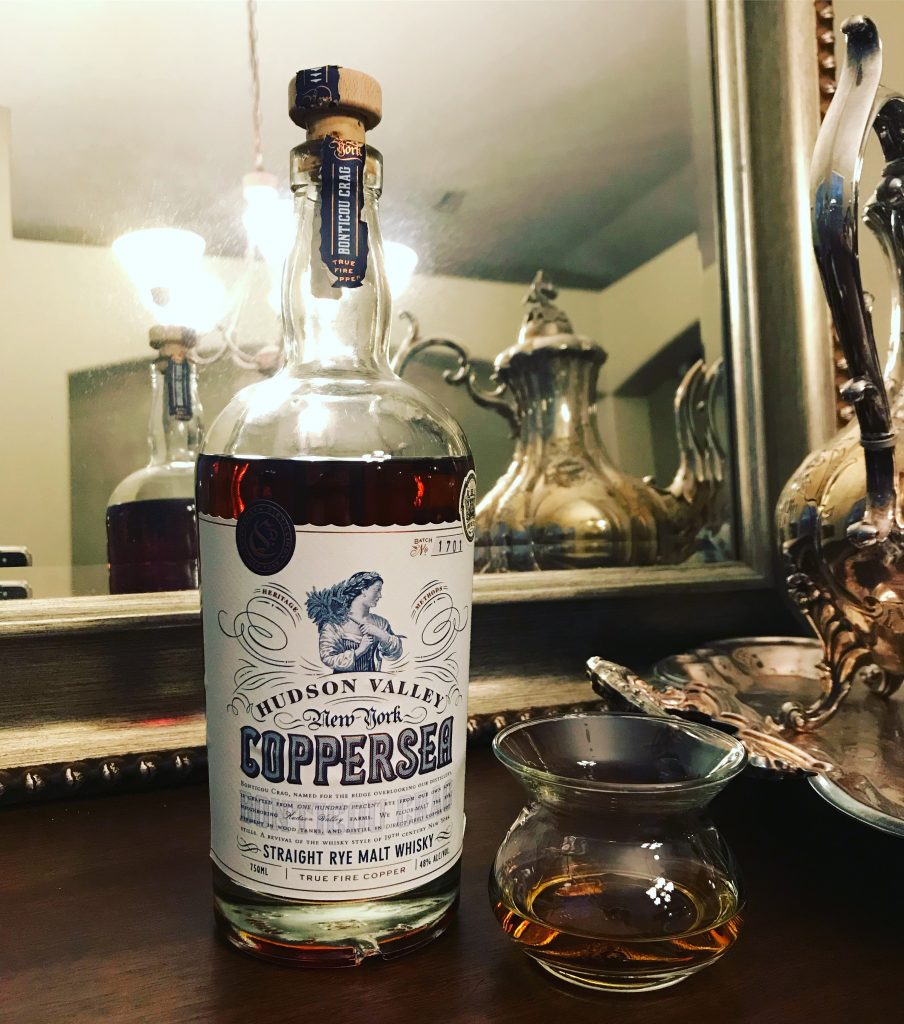Exploring Coppersea Distilling
I was introduced to Coppersea Distilling in Reid Mittenbuelers book “Bourbon Empire”. We’ve all read the marketing pitch. Every craft distillery has their story on why they’re different. Yet, the more I dug into Coppersea the more impressed I was with their distillery. You see, Coppersea is bringing back heritage whiskey making methods. They use traditional equipment to apply these methods. I was able to track down Chief Distiller, Christopher Williams, for a phone interview. It was one of those calls that I schedule for 30 minutes. Only to find myself still asking questions an hour and a half later. This post breaks down what they’re doing that’s unique at Coppersea.
Coppersea is in New Paltz, NY. About two hours from NYC. Let’s start with the grain. Coppersea sources all their grain from the Hudson Valley. They grow a portion of the grain they use. But, they don’t have enough just yet to distill only their grain. The grain is malted in-house. This is a labor-intensive process that takes about a week. Malting their own grain allows them to more control over the process. As you’ll notice, Coppersea is big on controlling the process for quality purposes. The malted grain is kiln dried before it’s used in a mash. The grains are then ground for use in their mash.

With the grains ready to go Coppersea prepares for fermentation. They cook the grains at 145 degrees to provide the alpha and beta enzymes they developed in their malting process to do the work of converting the starch to fermentable sugar. The mash spends about 2 days as wild fermentation until they pitch a beer yeast. The wild yeast provides much of the flavor of the fermentation while the beer yeast does the heavy lifting converting the sugar to ethanol. They have a very long fermentation—5-6 days total per mash. The industry standard is 2-3 days.
If you’ve purchased a bottle of E.H. Taylor you’ll notice the letters “OFC” on the label. Today’s marketing refers to OFC as “Old Fashion Copper”. This was a way to signify the copper stills used at the E.H. Taylor Distillery. But, OFC originally stood for Old Fire Copper in reference to the E.H. Taylor distilled over an open flame. Coppersea uses the tradition of an open flame still. An all copper Alembic still over an open flame is used at their distillery. Direct-fired stills can be difficult to control. They often result in a burnt mash. Plus, open flames and alcohol vapors don’t exactly mix. Thus leading most distilleries to use steam or an electric heat source. I asked Christopher about the open flame. He compared it to cooking paella in a rice cooker as opposed to a paella pan. Sure, you have a cooked rice dish with either. A paella pan creates a dramatic difference in flavor due to caramelization.

The final step in the whiskey making process is the barrel. Coppersea sources their barrels from Kelvin Cooperage. They developed a cooperage with a partner to make barrels from New York oak. While they used 15-gallon barrels they moved to 30-gallon and traditional 53-gallon barrels. Entry proof plays a role in the flavor development of a whiskey. Higher proof means more ethanol soluble flavor compounds are extracted from the oak. The lower proof allows more of the less known water-soluble compounds to be extracted. Coppersea has one of the lowest entry proofs I’ve seen. They enter the barrel at 101 to 105 proof. Coppersea now has a good supply of 2+ year whiskey. They intend to let some continue to age.
All these factors and attention to the smallest details create a unique product. Coppersea is different. They’re intentionally different. They are producing a distinct regional whiskey. They want to be the funky farmhouse blue cheese of the whiskey world. I have to admit. Based on what I’ve tried I’d say they’ve been successful with this mission so far.
Coppersea Empire Rye Review
Empire rye is a new class of whiskey several distilleries from New York are working on. If you’re unfamiliar, here are the standards. Distribution is pretty limited on this one. Luckily, my brother happened to be taking a trip to New York and was able to grab a bottle. It is a little pricey as well. I believe my bottle was around $80.
Age: 2+ years. Most likely a blend of 2-4-year-old barrels
Proof: 96 proof
The nose is syrup and spice. It smells like a bowl of cinnamon oatmeal. There’s a slight astringency from the oak. I was looking for that youngness on the nose but never found it. The taste is sweet and malty. It’s like a chocolate malt ball with a spice dark chocolate. A lot of cinnamon and black pepper. It reminds me of red hot candies. There’s a viscosity on the finish. I keep thinking back to the cinnamon oatmeal note from the nose.
Conclusion: Overall I really like this whiskey. This is the kind of releases I want to see from craft distilleries. They’re not trying to be a massive distillery or even compete with them. It’s a unique product but most importantly it tastes good. We’ve all been burnt on a “craft” purchase that is undrinkable. It’s nice to see craft moving in a different direction.


6 comments
I want to thank you for this post. I feel that many Craft distilleries are focusing on doing what everyone else is already doing. I get confused by this because they are going to be the ones who push the big guys to thinking out of the box.
I agree that Coppersea is doing some impressive work compared to other crafts, but their lack of aging creates a very light and sweet product. It is very drinkable, but for $100 a bottle I am not sure it is worth it. I still have a bottle of the original production I will keep in my collection, but not adding any right now. I look forward to see what they will do in the future. If you haven’t already, you may want to check out what Reservoir is doing in Richmond, VA.
You should try the rye from 5&20 distilling in Westfield, NY. It’s by far my all time favorite rye. I always describe it to friends as “the original Fireball” due to its nice cinnamony taste.
Do you know if it’s available outside of NY?
I never knew distilleries source grain from the Hudson Valley. You learn something new about your childhood community every day! I live in High Falls now, but my nostalgia is compelling me to return for a visit.